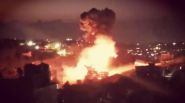
Israel Strikes Hezbollah Site in Southern Lebanon
This is Beirut 12/01 10:20

This is Beirut 12/01 10:20

This is Beirut 09/01 20:20

This is Beirut 09/01 19:55

This is Beirut 09/01 19:35

Claudia Groeling 09/01 12:50

This is Beirut 12/01 21:35

This is Beirut 10/01 14:25

This is Beirut 10/01 12:35

This is Beirut 10/01 12:15

This is Beirut 09/01 20:15
Hala Abdallah 06/01 21:35
Hala Abdallah 2025-12-30 17:00
Maria Chami 2025-12-30 13:00
Rayan Chami 2025-12-26 17:10

This is Beirut 2025-12-21 15:05

This is Beirut 2025-12-21 12:05

Eleonore Stephan for Huna Lubnan 2025-12-21 09:05

This is Beirut 2025-12-20 18:05

This is Beirut 2025-12-20 16:05

This is Beirut 12/01 18:15

This is Beirut 09/01 20:40

This is Beirut 08/01 17:30

This is Beirut 07/01 20:45

This is Beirut 06/01 17:00

Makram Haddad 2025-12-19 08:40

Makram Haddad 2025-12-18 08:50

Makram Haddad 2025-12-17 11:30

Makram Haddad 2025-12-16 09:30

Makram Haddad 2025-12-12 11:10

Bélinda Ibrahim 2025-12-17 11:00

Makram Haddad 2025-12-17 08:50

Bélinda Ibrahim 2025-12-11 10:30

Bélinda Ibrahim 2025-12-10 12:00

Bélinda Ibrahim 2025-12-04 15:05